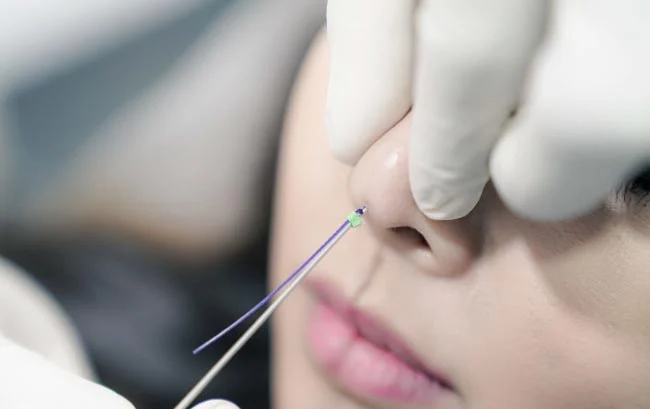A deviated septum can lead to persistent breathing challenges, discomfort, and disruptions to daily life. For those who experience these issues, surgical correction is a potential option worth exploring. While the term “deviated septum” is commonly mentioned in discussions about nasal obstruction, the specifics of what it entails and how it is corrected might not always be clear.
What Is a Deviated Septum?
The nasal septum is the thin wall that separates the two nostrils. For many individuals, the septum is slightly off-center. When the misalignment becomes severe, it is referred to as a deviated septum. This condition can obstruct airflow, leading to breathing impairments and other related concerns. Common symptoms typically include difficulty breathing through one or both nostrils, nasal congestion, and disruptions during sleep, such as snoring. Some individuals might also experience nosebleeds or facial pain.
Causes of Deviated Septums
A deviated septum may result from a variety of factors. It may develop naturally during growth or be caused by nasal injuries or trauma. Some individuals might not even know they have a deviation unless they encounter breathing challenges or seek medical evaluation for related issues. Not all deviations will require intervention. A medical professional is well-positioned to assess whether the condition significantly impacts daily functions and whether surgery might offer relief.
What Does the Surgery Entail?
When conservative measures, such as nasal sprays or other non-invasive treatments, do not alleviate the symptoms, surgical intervention may be recommended. This procedure, known as septoplasty, focuses on adjusting the position of the nasal septum. Septoplasty is performed by an ear, nose, and throat (ENT) specialist. During the surgery, the surgeon repositions and restructures the deviated septum to allow for improved airflow.
The procedure is typically carried out under either general anesthesia. Through incisions made inside the nose, the specialist carefully adjusts the septum by removing or reshaping portions of bone or cartilage. The goal is to achieve better alignment, ultimately resulting in more effective airflow through the nasal passages.
Duration and Risks
Septoplasty can be completed within a few hours, and patients may spend an hour or two in a recovery room. Like any surgical procedure, there are potential risks that may include swelling or mild bleeding. ENT specialists will provide detailed pre- and post-operative instructions to minimize these risks and promote recovery.
What Happens Afterwards?
Recovery from septoplasty is a key part of the process. While the procedure itself is relatively straightforward, understanding what to expect during the aftercare phase can help individuals feel better prepared. Below is a general outline of how recovery may look and the long-term benefits.
The Immediate Recovery Period
After surgery, patients might experience mild swelling, congestion, or discomfort, but these symptoms should gradually diminish within a few days. Strenuous activity should be avoided for a few weeks after surgery to minimize bleeding. This can include blowing your nose.
Long-Term Healing and Benefits
Most individuals begin to notice improvements in their breathing within a few weeks. Full recovery and stabilization of the nasal septum may take a few months. Over time, patients might report better sleep quality, reduced nasal congestion, and a noticeable improvement in their overall comfort.
Speaking to a Specialist About Treatment
Breathing is fundamental to overall well-being, and living with a deviated septum can significantly impact one’s quality of life. While surgery might not be necessary for everyone, it is worth understanding how procedures like septoplasty can address persistent issues. If you are experiencing symptoms such as nasal congestion, frequent sinus infections, or ongoing breathing difficulties, consulting with a qualified ENT specialist can provide clarity on treatment options.
- FREHF – The Revolutionary Future Of Human-Centered Technology!
- Adsy.Pw/Hb3 – Boost Your SEO And Drive More Traffic!
- Fitness Based Vacations By Timeshealthmage.com!
- TimesHealthMag Tips For Improving Sleep Quality – Expert Advice For Better Rest!
- How TimesHealthMage Helps Improve Your Lifestyle Habits!


Leave a Reply